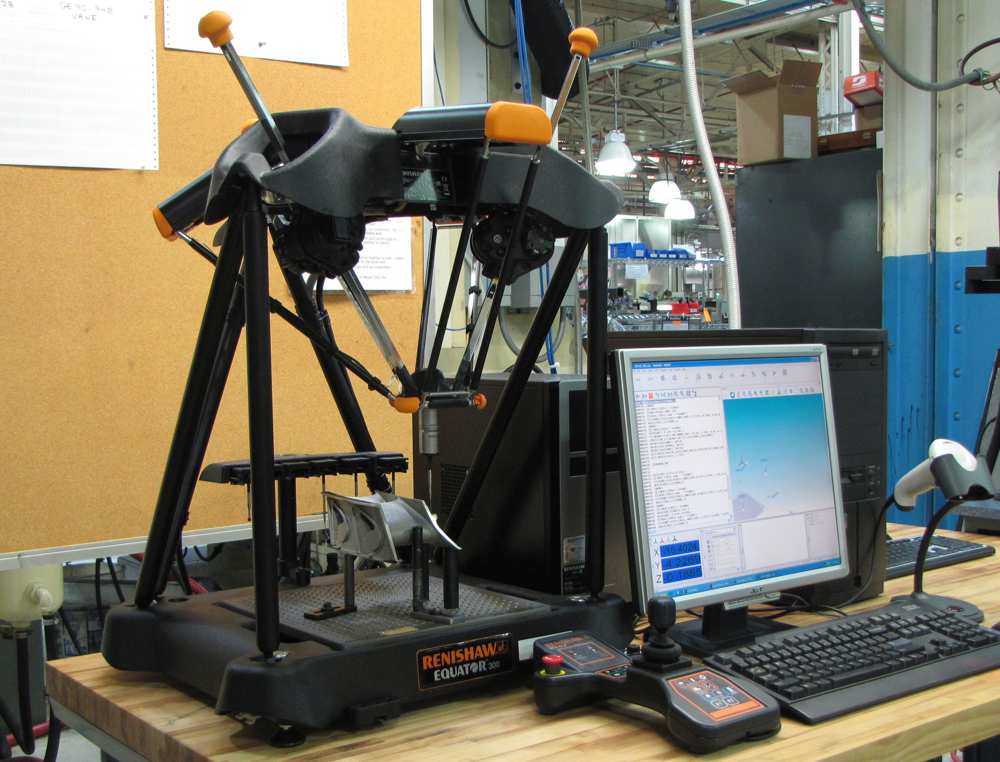Intelligent manufacturing for industry 4.0

Paul Maxted, director of industrial metrology applications at global engineering technologies company, Renishaw discusses how intelligent manufacturing is benefiting the metalcutting industry.
Joseph Whitworth, a leading Victorian tool maker who is better known for his screw thread design, was also a pioneer in the production of precision flat surfaces. As he rightly declared to other engineers, “you can only make as well as you can measure.”
Measurement technology is applied with process control techniques to ensure that a machining process is within specification and that the resulting part meets the design requirements of fit, form and function.
Manufacturing and design evolution across all industries has required a continuous drive for higher precision in CNC machined parts. Designers are requesting closer tolerances or less deviation than ever before, particularly where product efficiency, reliability and appearance are heavily influenced by manufacturing capabilities.
Probing systems are well known for reducing set-up time associated with manually establishing workpiece positions and measuring cutting tool parameters. Manufacturers are also increasingly using probing systems to gain additional information and subsequently improve process control in their machined parts.
The adoption of automation is one of several challenges affecting the CNC machining industry as manufacturers strive to improve productivity and remain globally competitive. The integration of measurement technology allows successful implementation of factory automation for precision machining whilst reducing the dependence on a traditional, skilled workforce.
With advancing sensor technology and higher expectations on part performance, manufacturers now require more types of information on machined parts. This means that, as well as measuring the size of machined features, manufacturers may require additional details about feature form and surface conditions.
Multi-sensor measurement systems have been developed to meet this requirement, giving information on surface dimensions and condition from a single device, when factored with the capability to acquire substantial surface data through high-speed scanning, full part measurement information can be established significantly more quickly than with previous methods. This allows manufacturers to make more frequent measurements and improve their process capability without additional capital expenditure.

Feedback from probing systems, built up over successive measurements, is the basis for the preventative, predictive, active and informative controls that all feed in to effective process control. The information gives CNC machines the intelligence they need to make decisions that deliver consistent process output.
Measurements can be incorporated before, during and after metalcutting to improve process capability, machine performance and productivity. However, while many manufacturers only use traditional post-process measurement to verify process output, there are sources of variation that need to be addressed during machining. The only way to achieve this is through a combination of measurements, before, during and after the machining process.
Before machining, CNC machines can be calibrated and maintained to ensure they are capable of achieving the required tolerances. During metalcutting, measurement feedback can be used for in-process control using either on-machine or off-machine gauging techniques. Process data can then be fed back into the engineering or design teams to continually improve product design and manufacturing capability. In-process measurement data is the only information that gives manufacturers a true insight into sources of variation during a machining process.
Machining in Industry 4.0
This focus on insight also underpins a growing trend - Industry 4.0 predicts a transition to intelligent factories with minimal waste and improved efficiency using optimised, automated processes. The capture of data from multiple sensors and the ability to analyse and control processes automatically is crucial for this.
The smart factory concept depends on connected control systems that communicate, interpret and respond to information in real-time. Smart machines detect faults and diagnose problems with production through intelligent process control. This concept is impacting all aspects of manufacturing, including machine tools and metrology. At each stage of the process, automated systems are becoming more capable of supporting metalcutting applications.
The successful implementation of automation into Industry 4.0 relies upon data collected from connected sensors for monitoring and control being communicated. As a part of this trend, metrology equipment has been incorporated into manufacturing systems to gather data for use in intelligent decision making to prevent process variation.
Currently, only a small percentage of manufacturers have access to instant, real-time status updates from all systems in their production lines. Those that do not have access are missing out on the opportunity to streamline their manufacturing processes and achieve optimum efficiency.
To make the best use of data, manufacturers can use computer networking across different digital platforms rather than the ports and cables that machine tools previously used to communicate. The number of manufacturers with the knowledge to maintain and run large amounts of hardware and software is on the rise, increasing the uptake of digital technology.
Most machine tools are now equipped with networking hardware to communicate with other systems. As integrating this with other systems becomes easier, more manufacturers will be able to reap the benefits of Industry 4.0.
Improving productivity
Automated metalcutting can improve manufacturing productivity by minimising the time delay that manual measurement would have taken, such as machine set up times and delays waiting for co-ordinate measuring machines (CMM). It can also reduce scrap costs - by improving the capability of a process, manufacturers will produce fewer non-conforming parts - therefore reducing scrap costs of potentially expensive materials.
The technology can also improve production yield, as keeping parts within increasingly tighter design specifications ensures the maximum number of correct parts are produced in the minimum time in the factory.
Integrating several sensor technologies into a single inspection operation allows increased measurement throughput, this in turn allows more frequent control and information gathering. Therefore, more data can be collected and used in high level systems for predictive analytics and decision making. We may only be able to make as well as we can measure, but capabilities are definitely on the rise.











